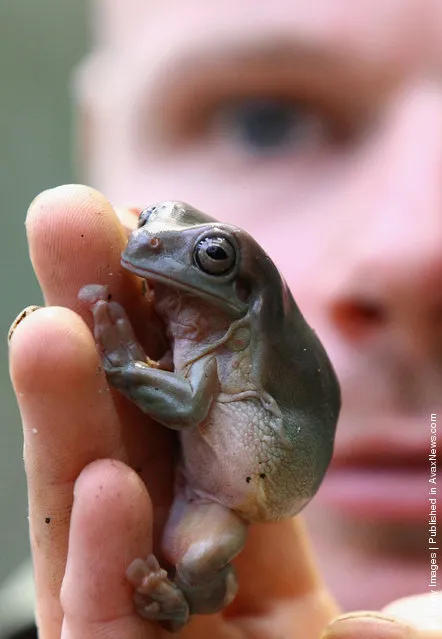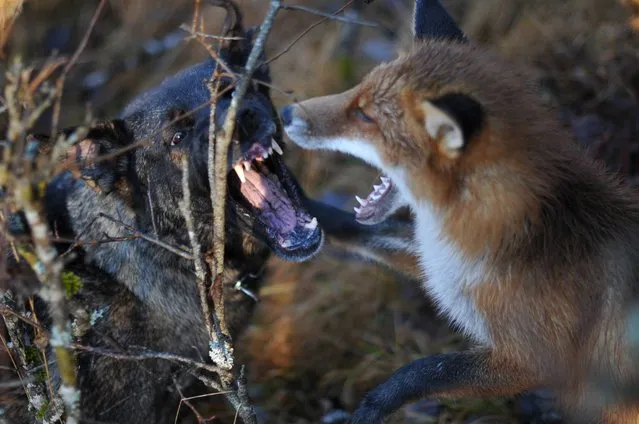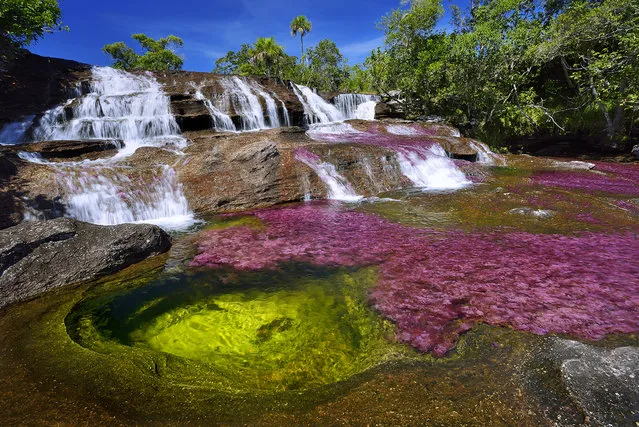
Zoo keeper Ross Poulter holds a White's Tree Frog in Edinburgh Zoo's new tropical forest zone on September 9, 2011 in Edinburgh, Scotland. The Brilliant Birds Exhibit which brings together beautiful and rare birds from all over the world is now more colourful and unusual, with the unveiling of the zoo's new tropical forest zone bringing together a collection of vertebrates, invertebrates and amphibians for the very first time. (Photo by Jeff J Mitchell/Getty Images)
10 Sep 2011 12:10:00,post received
0 comments







